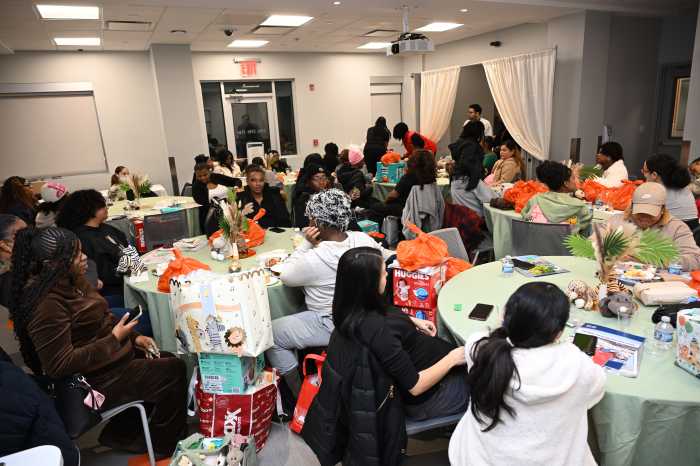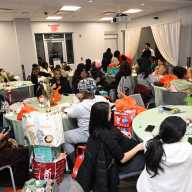By Harvey D. Goodman
By far the most popular vegetable grown in the gardening season is the Tomato. Red, firm, succulent…an absolute delight to behold and eat. No fat or cholesterol to worry about, a minimum amount of calories, and chock full of vitamins and minerals. Cook it, dice it, slice it or eat it right off the vine. Add salt, pepper or salad dressing or just enjoy it for its natural taste.
This column is beginning to sound like Emerill Live …perhaps we should leave, but only for a moment, the feasting pleasures of the tomato, and direct our attention to selecting, growing and harvesting the crop.
Tomatoes come in four basic varieties: the cherry, medium, plum and beefsteak. Some of the more common varieties of these types include Gardeners Delight Cherry Tomatoes, Better Boy Medium Tomatoes, Roma Plum Tomatoes and Beefmaster Beefsteak Tomatoes.
In general, cherry and medium tomato plants will mature in about 65 days. Most plum and beefsteak tomatoes mature in 70 to 80 days. Carefully selecting the correct variety will allow the patient gardener to have a crop of tomatoes from early July through September.
By the time you are reading this column, you have passed the ideal season for planting tomato seedlings. Generally, I plant the seedlings after the danger of evening frost has passed…most often by mid-May. I select seedlings that are pot-grown, and are 6 to 8 inches long. The leaves should be a full, rich green, and the roots should be white. I avoid plants that are root-bound, or where the leaves are yellow and hang on scraggly stems.
Tomatoes require three basic ingredients to grow properly, and to yield a bumper crop. The first is a soil that is rich in humus. Compost-enriched soil and weekly feeding will be required to meet the nutritional needs of this fast-growing plant.
Tomato plants prefer a sunny location that is somewhat protected from wind and the excessive heat that generally occurs mid-day during July and August.
Finally, these plants consume a huge amount of water. They wilt easily — even after being watered in the morning. Better to water the plants several times during the day, then to provide a drenching watering once a day.
If the preparation is done properly, you should begin to see clusters of yellow flowers developing throughout the plant. The yellow flowers signal the location for the future tomatos…singular for the beefsteak, and often in clusters for the cherry. As the fruits develop the tomato plant will begin to sag from the weight of the vegetation. Tomato plants must be tied to a stake or wire cage for support. Some tomato plants can grow to a height of 6 to 8 feet, the stakes have to be rather thick and tall to support these heavily fruited plants.
After the plant has produced four to six flower bunches, you might wish to pinch the top of the plant in order to inhibit any additional growth. The plant will now focus on the production of fruit instead of growing taller.
The most common problem that occurs in growing tomatoes is the appearance of split skins, usually from irregular watering. The gardener who waters heavily one day, and allows the plant to dry the next, will cause the skin of the developing tomato to split. As suggested earlier, give these plants a steady supply of water. If it is particularly hot, you may consider watering the plants several times a day.
Aphids and other pests sometimes menace your plants. These six-legged creatures enjoy the vegetation about as much as you do. I am not in favor of using chemical pesticides on vegetation I intend to eat. The best control, therefore, is biological. One suggestion is to plant marigolds, poppies and nasturtiums between your plants because they attract insects that eat aphids and other tomato pests.
Holes in fruits may signal the presence of the dreaded tomato hornworm. Remove the damaged fruit and pick off the caterpillars. The hornworm is a rather large caterpillar…its presence is easily discovered. Several species of wasps may help you in this effort. Some wasps lay their eggs on the caterpillar. The larvae drive into the caterpillar after they have hatched from their eggs and mature in the now deceased host.
Just as too little water becomes a problem, too much water can also cause severe problems. A clue to over-watering or when we experience a particularly wet summer, are brown leaves and black stems Calcium deficiency and irregular watering can cause a condition known as blossom end rot. The symptoms include a brown leathery appearance on the bottom of the fruits. Once more, regular watering, coupled with a fertilizer that includes some calcium will prevent this condition.
When the season is over, pick the still unripened tomatoes and place them is a container or bag with some ripe apples or bananas. The ripening agents released by these fruits will stimulate the tomato plant to ripen as well.
Some Basic Care for Summer Annuals
Water annuals more often than trees, shrubs or perennials. Annuals often have smaller root systems that grow near the surface, and so have a tendency to dry our very quickly.
Mulching the soil near your flower beds will keep the soil cool, retain moisture and prevent the growth of weeds.
Yellowing, limp leaves may be a sign of over-watering. Excessive water in the soil can literally suffocate the root system, thereby hampering their ability to bring nutrients to the leaves.
While fertilizing is desirable, you must follow the suggestions on the package for proper application. Too much fertilizer can be very harmful to plants, similar in symptoms to over-watering.
Annuals carry out their life cycle in one season. First they germinate — produce roots, stems and leaves. Shortly after reaching an optimum height, the plant produces flowers and goes to seed. Deadheading is a technique used by gardeners to ensure continuous flower production. By removing the spent flowers, the plant expends its energy to produce more flowers rather than seed. If you don’t pinch off the blooms, then the plant will produce more seeds and fewer flowers.
Questions or comments on gardening and plant care can be addressed to The Plant Doctor, Queens Publishing Company, 41-02 Bell Blvd., Bayside, N.Y. 11361., or e-mail: Harvey.Goodman@worldnet.att.net































